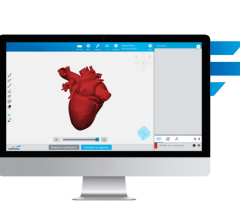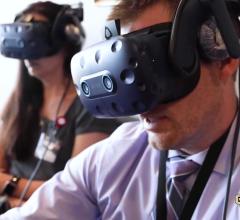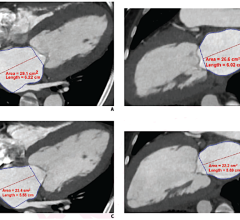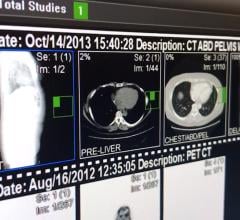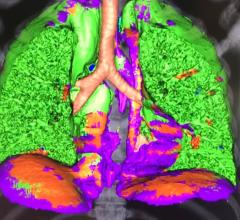As other industries turn to the virtual cloud for a variety of information technology (IT) solutions, those in healthcare — especially in radiology — continue to weigh in carefully on the pros and cons of running software tools, as well as hosting their data and medical images, on a third-party server. While the potential for lower costs, improved scalability and faster deployment of services is attractive to physicians and hospitals, concerns such as security issues and increased dependence on an external service provider can also factor into decisions regarding the cloud.
There are several ways of using the cloud, according to Fred William Prior, Ph.D., of Washington University in St. Louis. The three basic service models are SaaS (software as a service), PaaS (platform as a service) and IaaS (infrastructure as a service). SaaS refers to the use of software through the Internet, whereas the user can add and manage data and access programs via a Web browser. PaaS allows users to create and control their software by using the provided infrastructure. IaaS provides users with virtual resources such as computers, servers, firewalls and virtual local area networks (LANs).
Additionally there are several methods of deployment, each depending on level of privacy. The private, community, public and hybrid models of cloud delivery each offer varying advantages, but for the storage and management of critical data, many healthcare providers find that private clouds offer the least risk.
Cloud Advantages
With hospitals looking for ways to cut costs, shifting IT responsibilities to an outside expert can be one way of trimming dollars. Having a picture archiving and communications system (PACS) or electronic medical record (EMR) hosted on the cloud relieves the hospital from maintaining an extensive IT department, as well as having to regularly update and check for new technologies. System performance and computing power, in effect, become the responsibility of the cloud provider. Use of the cloud also can benefit centers operating on a smaller scale than hospitals, finding cost savings through the elimination of expenses such as hiring in-house IT professionals, or buying and transporting computer equipment to outlying remote areas.
The cloud also can improve scalability. With an ever-increasing amount of medical images processed, interpreted and stored each year, radiology and IT departments should consider the fact that they may not be able to adequately keep up with internal demands for storage. Hospitals can save time and money by shifting the responsibility of continually expanding space and upgrading computer equipment to a cloud provider. Some providers offer flexible data plans for facilities that may need to upgrade on an as-needed basis. This can be useful for institutions that are looking for ways to offload older cases into databases for future imaging research, said Prior.
There are other advantages available to healthcare providers that deploy their PACS, EMR, radiology information system (RIS) and other systems to the cloud. Those in areas that are prone to natural disasters may benefit from hosting their data virtually. If the power goes out or a flood strikes, radiologists can rest easy knowing their reports are backed up and stored securely at an external location, or are easily retrievable from the cloud provider. Many cloud providers also maintain multiple, secure data centers to ensure that if one experiences a brownout or blackout, hospitals can still retrieve their data from the cloud with little problem.
Industry Slow to Embrace
A few of the aforementioned advantages can also become some of the major drawbacks to cloud computing. Some departments are wary of becoming overly reliant on an outside provider for IT needs, said Steve Gerhardt Langer, Ph.D., from Mayo Clinic. While convenient for cases in which hospitals experience a disaster or crisis, should the cloud service itself experience a small glitch, it may accelerate into inconvenient delays for physicians in need of a patient record or medical image. The delays in turn may be harmful to a patient waiting for results. While not common, temporary outages, such as those experienced by popular services like Amazon and Google, have been known to affect, at some level, the millions of users and businesses that rely on them.
The reliability on Internet connection is also a concern for some hospitals, especially those in remote rural areas. While the Web has become fast and easy to access from anywhere, healthcare providers in locations outside the grid may find that shaky Internet connections impede the storage and retrieval of files that are large in size. In this case, there would be doubts about paying for such backup storage or management system when the connections to access that program may be unreliable.
Legal issues are also important when considering the cloud, said Langer. Undoubtedly healthcare providers and radiologists would like their archives to be vendor-neutral and to avoid any required proprietary software. The public cloud model of delivery could also expose them to any rogue activity of non-healthcare cloud users. Bolstering security may be one way of circumventing the risks, but it could add significant cost to the cloud service.
With all of these factors at hand, the key for healthcare providers on making a decision regarding the cloud will be to weigh them all carefully according to their own individual needs and preferences. itn

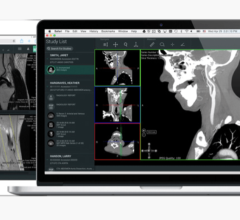
 February 01, 2024
February 01, 2024 
